Springboard Your Business with Smart Data Strategies - TRANSCRIPT
March 21, 2024 at 12:00 p.m.Editor's note: The following is the transcript of a live interview with Eugene Zukowski from Jobba Trade Technologies, Michael Black of Sutter Roofing and Alex Pegnato from PRIN. You can read the interview below, watch the webinar or listen to the podcast.
Heidi Ellsworth: Hello, everyone. My name is Heidi Ellsworth. And this is the Read, Listen, Watch, RLW, on RoofersCoffeeShop. This is going to be a very, very interesting RLW today. We're going to be talking about data and how important it is to springboard your business with the smart data, and we have the panel who can give you the strategies. So, we are very excited for this RLW today.
A few little housekeeping. First of all, this is being recorded and it will be available on demand within 24 hours, so be sure to share it. Let your company know. Let your friends know. This is the kind of information that can really help grow your business. So, let's get started. The chat is open. As always, please let us know who you are, where you're from and what kind of business you have. We love to have you ask questions, make comments, whatever you think throughout the entire RLW episode.
So, how about some introductions? First of all, I would like to welcome to today's RLW, a return guest, Eugene Zukowski with Jobba. Eugene, welcome.
Eugene Zukowski: Thank you so much, Heidi, for having me back again, and much appreciated. Really, really excited about this one in particular. We all love data and nobody more than me, so I appreciate that.
Heidi Ellsworth: I'm telling you what I love data. I didn't used to, but I do now.
Eugene Zukowski: Absolutely. It's so easy to get. It's what you need for a great business. So, thank you so much for being here, and thank you to Java for sponsoring this RLW and really bringing data to the forefront. It's just so important. I would also like to welcome another returning guest, Michael Black with Sutter Roofing. Hello, Michael.
Michael Black: Hello. Thank you very much for having me on today. I'm pretty excited about this topic as data runs my daily ... Everything I do daily is based off data, so I'm excited to talk about that.
Heidi Ellsworth: I love it. Well, why don't you go ahead and introduce yourself and tell us a little bit about Sutter Roofing.
Michael Black: Okay. My name is Michael Black. I am the director of service and maintenance for Sutter Roofing. Sutter Roofing is a fifth-generation roofing contractor, been around since 1902. We service primarily the Florida region, and we have our original office from 1902 is from Clarksburg, West Virginia. We specialize in all kinds of specialty roofing. I run the service division, so I take care of the service and maintenance contracts throughout the state of Florida.
Heidi Ellsworth: That is great. Thank you again for being here. And I am so excited to welcome Alex Pegnato. Alex, thank you so much for being here today. Please introduce yourself and tell us a little bit about your company.
Alex Pegnato: Yes, thank you for having me. My name's Alex Pegnato. I'm the president and CEO, I wish, but COO of Pegnato Roof Intelligence Network. We are a roof asset management platform. That's kind of a mouthful, but pretty much our digital platform is built around data and we're really trying to revolutionize the roofing industry by utilizing data to help clients really manage their portfolios and manage their spend. So, I'm excited for today's topic. Yeah.
Heidi Ellsworth: This is the perfect panel I'm telling you. So, let's get started. A reminder again, the chat is open, so please let us know who you are, questions, thoughts, all the way through this webinar. Okay. Let's start out. And I love this question because I think the hardest part of anything is knowing the right questions to ask. So, what questions should contractors be asking themselves when it comes around data? And Michael, I would love to start with you. What's your thoughts on the questions that are important to ask?
Michael Black: Well, the question, what keeps you up at night, obviously there's several things being the roofing contractor, weather and all that, but my main thing is the customer satisfaction. Did we do what we say we're going to do? Did we deliver to the client what we're supposed to deliver? What was the feedback? Did my team perform as they should? That's really my main focus is how we deliver and how we present ourselves to the client. Did we do what we say we're going to do?
Heidi Ellsworth: Asking that question, what keeps you up at night, and then as you're looking through that, there's a lot of other questions. Alex, what are some of the questions that you really think contractors should be asking?
Alex Pegnato: Sorry, I wasn't ... I feel like from our end, what we see and we'd come into our office in the morning and we kind of look at where there's a life cycle of a call from accepting the order to scheduling it, to completing it. So, where is our pain point? Where are we most heavy, where we need to get information from our contractors on? Are they accepting the order? Have they scheduled it? Did they do it? So, I think what we look for as biggest is timely communication, and that's kind of what our focus would be.
Heidi Ellsworth: Yeah. No, I think that's perfect. I mean, really that first thing in the morning, what do you need to know? How do you keep the business going straight? What's happening? Okay. Eugene, what are some of the red flags for you when it comes to, when contractors should be saying, "What are my red flags? What is really making me nervous," kind of exactly long thing. Talk about those questions.
Eugene Zukowski: Yeah. When I'm looking at this and looking at Michael's thing, for example, here, a red flag to me, obviously Michael's example would be, who's not performing? What customers are unsatisfied? How do I point that out quickly and see that information? I mean, just looking at it, you really want to look at a red flag is what's abnormal compared to what you're expecting. What pieces of information do I need to know right away in order to be able to ask more questions? To me, data is about what questions should I be asking?
And those red flags to me are, everyone's a little bit different, but in Michael's example, it's customer service, who's unhappy? How do I know that quickly? Alex's is, are we responding to people in the right time? How do I know that right away? So, I think everybody's red flags might be a little bit different, but it's really about getting to those red flags and trying to figure out what questions you need to start asking yourself.
Heidi Ellsworth: Yeah. And I think as a business owner, you're always thinking, how can I make this better for my employees, for my customers, for myself? So, Eugene, talk a little bit just data kind of does help that. It takes that unknown away, which makes a little bit of a comfort zone.
Eugene Zukowski: Yeah, 100%. I mean, having your data, it's a comfort zone because again, I mean, you've got big or small organizations, you would not believe the level of activity once you sat back and looked at it from a far away view. There's a ton of things going on and it's really hard to spot something when you're looking at everything.
So, to me, I think the easiest way to get that is to be able to have something, a tool, some way to get that information and really start building out to me like KPIs or what information really matters to you, access to your data. Because again, it's really a lot. To me, data could be overwhelming because again, each small or big organization, there's tons of it being accumulated daily. It's being able to see that data and make sense of it. Because I like to use the phrase, analysis paralysis. When you're looking at so much data, you don't know what to do because everything looks like, "Oh, wow, how do I make sense of this?"
Heidi Ellsworth: Yeah, so true. It's so true. So, I think knowing that you need the data in order to take care of some of these questions, but these questions help you know what data you want, what data you're looking for. And so then, it comes to the question of how do you process that? So, Alex, when we're looking at the process for assessing data, how you get to it, talk to us about this.
Alex Pegnato: Yeah, so I guess also good data could be different for various people, but you also want to kind of keep it simple. Like Eugene was saying, there's so much information. What data really matters? What are you trying to accomplish? What are you trying to achieve? And utilizing all the data you have and really getting laser focused on what's important for what part of your business, whether it's what you're trying to deliver to the customer, how you're trying to staff, how to plan for the future. Could I just keep going?
Heidi Ellsworth: Yeah, please.
Alex Pegnato: So, with regards to it being accessible and usable, we both have various, we as in Java FCS in PRIN, we have these platforms and we have dashboards. So, creating a user-friendly customer experience, but also user-friendly user experience when you're working in it, like Michael Black's working in FCS, he's able to easily manipulate the data and present the data that fits what they're trying to do. And with regards, again, I guess to accessing it, is making it as simple as possible to get it in front of the customer, whether that be a log into your system, exporting the data, those kinds of things.
Heidi Ellsworth: Yeah.
Michael Black: And to go along with that, data has become a change mindset for contractors. Data is more important than the roof repair right now. To most contractors, they need the data first and they're worried about whether you fixed the roof or what you did second and third. Nowadays, with all the apps that I use and everything else, data is the number one importance. I try to kind of say to my guys, "We sell data than we roof." Because without it, everybody's looking for that data right away.
So, you got to change your mindset from the old school where you're going to go out, do the roofing work and then send the data. Now, you got to make sure that data is available as soon as you're done or even before you're done, so everybody stays in constant contact. So, to us, it's a mind change that data is number one for us.
Eugene Zukowski: And that brings up another good point, Michael. That to me is really the idea for expectations for good data. In order for you guys to be able to collect that good data, it's got to be an expectation in the organization. You guys need to capture this information. It's part of what we do because this data is so important, not just at a company, but to our customers and everything like that. And that sets that expectation in the organization. We need to capture this information.
Michael Black: Absolutely.
Heidi Ellsworth: And I think access, so I just want to kind of go back on that with you, Michael, one more time too, is the ability for you to have and your team to have the right access to the data when they need it is so critical. And we've been in the industry for a while. If you look back 10 years, not even that long.
Michael Black: I can do one better. When I was a service manager, we had Polaroids and you would take a picture and put them in an envelope with an invoice and mail it out. Forty-five days later, they would get the invoice or whatever. Then it went to floppy disk and it went to cameras. Now, everything's web-based. Instantaneously, in fact, most customers can see the pictures when you take them on the roof if they're on the right program. So, now it's instantaneous data. So, data, cell phone, having the most updated cell phones, the best networks, it's almost a must because you have to keep up with the technology to be able to get that data to the clients.
Heidi Ellsworth: We have people on the chat saying, "Yes, I remember that." Yeah, I do too actually. So, as to have good data and to be able, we know it's accessible with the right software, that's so key, and having the right processes and systems set up with your team, but really understanding what data you need and what that entails. Michael, talk a little bit about setting KPIs and really understanding the data that is needed every day for a successful roofing company.
Michael Black: Like I said, data to me is a daily thing for me. The KPIs, for instance, for sales KPIs, you need to know what your team is out doing, who they're seeing, how often are they seeing them, what's the success rate. You can use that for instance. Other things for clients, the same data goes, "Well, I can track clients." I know there's certain months of the year that clients don't buy nothing and then they buy some and over historical data, looking back two or three years, I can know that this customer doesn't buy nothing from January to April. Then from March to October, they're spending all kinds of money with us.
So, you use historical data to kind of forecast your budgets to plan for everything so that the data we use from sales from our customers we use to forecast our future in the company.
Heidi Ellsworth: That makes total sense. So, Alex, what are some of the KPIs you see here that for yourself as you're providing service for the customers, but also for your contractors?
Alex Pegnato: Yeah, so one of the big ones is that was the main idea behind PRIN was how to track customer spend. And a lot of times aggregators may be turning a lot of lead calls and lead calls, but not really getting to the root of the problem. So, coupled with history and information on the roof, with the roof spend on service calls, we're able to help clients really prioritize and plan and budget using CapEx dollars versus just their site spend. So, I think that's been a big important thing that we've seen.
The other one kind of related to more of our contractor network, but also our internal team is repeat leaks. Are we not solving the problem? Are we spending money on a roof that really needs to be reroofed or unfortunately, sometimes are vendors not reading the description and not fixing the right thing. So, that's kind of what we use data on repeat leaks for.
And then lastly would be what we call our SLAs, our service level agreements. Customer service that Michael has mentioned is they expect us to be on site and to fix it within a certain amount of time. They don't want to wait 60 days for an invoice. They want you there in 24 to 48 hours, things like that. And so, we track that on our side, making sure our team is following up with the contractors, but also making sure that our contractor network is performing at what the expectation is from the customer. So, that's kind of what we're using data as well to track.
Heidi Ellsworth: Well, and that's interesting that you say that. We just had a great question come in for you that I want to pull in here, and it was, what information is the most important to your clients? So, PRIN's clients. And then what do they value most and what information do they receive well or what information do they not receive well and why? So, let's start with the first question, make this easier. What information is the most important to your clients?
Alex Pegnato: I think what we've seen and what we do is, so we have a dashboard. It shows kind of what your average cost per lead call is. And I think that's pretty important, especially when they have a national or regional portfolio spread across. Are they receiving the right pricing? Are they the same quality of work? So, I feel like the cost per call is important, but also the total spend on the site is important coupled with do we have inspection information?
So, I think it's mostly around the spend per site is what I've seen is most important for the customer. Because they might have somebody yelling at them saying, "It's leaking, it's leaking," but they're spending more money on this roof that no one's screaming, but it's just kind of getting reported. So, that's I think what's most important. And then what's the second one?
Heidi Ellsworth: What do they value? What do the clients value most and what information do they not receive well and why?
Alex Pegnato: I mean, I would kind of get back to the repeat leak situation. It's kind of difficult even sometimes when you present them with, "Here's what you need." And they're like, "Well, we want a service call. Go do a service call." And then they keep coming back saying, "Well, why does it keep leaking?"
So, that's kind of been the tough conversations to have is you're going to have to spend more money. You're going to have to invest in this. So, that's been the pain point is kind of getting them on board, but showing them the data. "Look, we're just doing leak calls and we've already spent 15 grand. This could be a 30-year roof if you replace it." So, that's kind of been the tough one to get them to kind of go, "Okay, let's move forward."
Heidi Ellsworth: Yeah, to make the correction. Eugene, you're nodding. KPIs and what do the customers care about most that you're seeing?
Eugene Zukowski: Yeah, I mean, going back to this is I keep nodding my head because I'm looking at this, I hear this all day, and that's really it. I mean, the key KPIs that I'm seeing, obviously it starts in the beginning from the phone call, what is my sales team doing? Who are they talking to? What does my pipeline look like for the next six months, year, three months? I mean, there's so much information there that can help management in my eyes really plan and help budget for the company labor. Not only how much labor do I have, how much labor is being spent out the door, how much are we billing for?
So, it's that level of KPIs that I'm seeing people are really starting to get interested in. Like the materials is another one that's on this list. I think that's important. It's interesting if you break it down and look at the data in a couple different ways. One is materials. Obviously, what's getting used in service calls, what kind of profits are we hitting. But if you look at your data another way, what proposals are going out with the door with certain materials that are not being sold.
You can actually flip your data a little bit when you look at it. I'm not selling X product. I'm noticing my proposals that include X product are not selling. So, if you take your data and look at it and really want to figure it out, those KPIs are so important and just a couple of different ways to see that information is important to me.
Heidi Ellsworth: Yeah. It's true. And what you're saying leads us right into our next question, which is really about what you're talking about. It's not always as much about what is working, but it's also about what is not working. So, continue on that topic.
Eugene Zukowski: Yeah. And this is also very important. A lot of people I think may look at data and expect an answer. When I look at data, I'm actually looking for the right question. So, that's really what I think If you have your data in a consumable way is going to be very important to you because it could help you see what's working, which could be a conversation with if you have one salesperson who's consistently outperforming others, that data is telling you, "Let's go talk to them and see what they're doing. What can we do to implement?"
But it's also showing you very importantly what's not working. Are we losing on service T&M calls? But is it because we're not billing enough? Is it because we don't have the right fuel surcharges, we're forgetting that fuel went up or whatever the case is, I think looking at those analytics, good data is going to give you better ideas to what questions you need to be asking further.
Heidi Ellsworth: Yeah, yeah. That's so good. Now, Java did a survey, a data survey on your customers. Tell us a little bit about that and then we're going to actually show a little bit of that.
Eugene Zukowski: Yeah. So, what we did is we actually pulled all of our customers to find out our client base, what did they know and what didn't they know about their own companies. And we really were trying to figure out where our customers were insight wise with their data. I mean, some of the best practices, for example, maintenance contracts, everybody knows or everybody should be, I feel, really trying to do that maintenance programs to really help their customers and help their company. So, we kind of was probing some questions like how much do our customers really know about their businesses and what's going on?
Heidi Ellsworth: I ask myself that every single day. I don't care what business you're in, what am I doing? What are we not doing? But for all of you out there, we want to do something a little fun here. We're going to do a poll. And the poll is going to actually be the same questions that was asked. We're going to ask two questions that were the same as asked in the JAVA's data survey. So, the first one is, do you know what customer relationships are at risk because of expiring maintenance contracts? So, please, if everyone could answer that question. And I can see people coming through right now. This maintenance contracts are so important, Eugene. I mean, really.
Eugene Zukowski: Yeah, they're unbelievable to me as far as helping both. Again, your customer, you're helping them extend the roof, the life of the roof they currently have, but you're also, from a company standpoint, you're helping yourself with obviously reoccurring revenue. You're becoming that vendor of choice because again, it's not who am I calling because I have a leakage? No, you call Sutter for example. It builds that relationship and it helps the customer. It's a win-win for everybody.
Heidi Ellsworth: Yeah, I think it's so important. So, we're going to go ahead and if anybody is going to answer, do it real quick because I'm going to go ahead and close this. And I just did, and we're going to share the results, which was about 63% said no. They do not know which customer relationships are at risk. And 38% said yes. So, that is great. And then if you look at what the Java data survey said, it was very similar. Almost 60% said no in their survey with just a little over 40% saying, yes. Talk about this a little bit, Eugene. I mean, you would think you would know, and where's that data coming from?
Eugene Zukowski: Yeah, I mean, this is one of those that to me, obviously this is customer service. This is what service departments do. This is something you want to keep track of because all it takes is another somebody to come in and offer the same service to you and your customers susceptible. So, to me, I was a little surprised that this wasn't closer to 80, 90% that we know what's going on with our customers.
But yeah, so where this data's coming from is obviously inside the system. You need a platform that's going to help you track all this information. I mean, small or large, you have a lot of customers, a lot of things happening day to day. And like I said, your company's constantly reducing data. And this is one of those that isn't exactly that shiny bright object because it's not in your face. That's very easy to miss if you don't have that very easy access to your information.
Heidi Ellsworth: Yeah.
Alex Pegnato: I would like to add something to this whole premise as well. So, what we've seen too is, again, it's one thing to have all this data, but if you're not presenting it to your customer and sharing it with them on a monthly, quarterly, annual basis, they don't really get to see that added value. And if you show them all this information that you have, you create what we call as sticky. They're stuck with you because you have all this information, all this history.
So, it's important not only to have it and utilize it internally, but you want to make sure you getting this in front of your customer. So that if they ultimately transition, the company, you go find that guy and say, "Look at all this stuff I have. We've been doing this for years. I got all the information you need. You don't need to go anywhere else."
Heidi Ellsworth: Yeah, it's so true. I mean, think about in just our daily lives, that's how it is. "Oh, well, my bank, I've got everything set up. Everything's going good. I'm not going to change." And so, you want to create that kind of stickiness. Well, and it also comes about the same thing, and we're going to do one more question on this poll, but do you know how long it takes to go from work order creation to getting paid? I mean, talk about an important question. And for everyone out there, it is open. So, please let us know. Do you know how long it takes to go from work order creation to getting paid? Michael, this seems like this would be one of the most important questions.
Michael Black: Oh, it definitely is. Like I said, with using the data correctly, your answer, I won't say the answer, but the answer should be within 15 days, if you're using the data correctly, you should be able to service that client, get the invoice out, give them 10 to 15 days to get paid. That should be your average. Like I said, in roofing, it used to be when you were mailing out invoices, it's 30, 45 days. But getting that customer that information, and then the main part is get paid for what you do. You provide a good service and you want to get paid and move on to the next project.
So, it is very important to use to have the right data and to make sure you get that invoice out to that customer. And they should turn around with your payment terms or you should be paid. I'm curious to see what the poll says, but I say, if you got the right platform, you should be getting paid in 15 to 20 days.
Heidi Ellsworth: Well, our audience agrees with you. We had 58% who said yes, they do know, but 42% do not know. So, I'm so glad you're here on this webinar because that's an important data that we're going to hopefully be able to help you obtain. But yet, looking at the Java survey, they said yes was actually 70% and no was 30%. But there's a lot more yeses than nos, but there's still a lot of room out there to work on work order creations. And Alex, this is a big deal.
Alex Pegnato: Yeah, I'm waiting to speak. But there's a lot of times where contractors that don't have a communicative advanced CRM system like Java FCS, that will go out in service and they don't necessarily communicate that, but you know what? The site's taking care of, that's wonderful. But it becomes like pulling teeth where we're getting to 60 days before the contractor sending us an invoice, then the customer doesn't pay for 60 days. So, this is such a pain point that we find that we have meetings with our contractors to say, "Look at the data. You're responding in three days. That's awesome, but you're not billing for 30, 45 days. You did it right away." Bill it, get paid for it. This one is the big one for us.
Heidi Ellsworth: It is huge. It is huge.
Eugene Zukowski: This is one of those stats that I'm a little astonished about because I mean, you can't borrow money free today. I mean, barely at all. And I kind of see people just have their money sitting out there not collecting interest. They haven't even asked for it yet, and their money's just sitting out there. They're not trying to get it. And that's a little surprising to me, to say the least.
Heidi Ellsworth: Yeah, I mean, this is money that could be making things happen right now that just hasn't been collected. And I've seen this over the years. But now with data and with technology that we are seeing, it is so much easier to stay on top of that. So, when you're looking at really, really using data to make informed decisions, Michael, talk about that. Every single day, you're using data to make informed decisions for the business. How are you doing that?
Michael Black: Absolutely. So, in this industry, we tend to be reactive. You wait to get your financial statement. You wait to get the job cost to find out, "Oh, there's a problem." If you're using the data correctly and daily, you can forecast. You can foresee that that job's going to go bad. You can foresee that you may lose a couple points. You can see if your salesman's not going to hit his mark. We use data every day, KPIs, and we look at all that on a daily basis. And we don't get surprised that much. We can pretty much forecast if something's not happening or something's going to happen.
That helps the whole entire business. It helps the team. You then have a meeting. You can go over what's going on. You get everything back on track. You can forecast what's come up to be good. And you can see what's coming up that may be bad for you. So, using data daily is very important to keep a business going. And you always got to be looking forward, and you got to try not to be reactive. It's all about being proactive in this business.
Heidi Ellsworth: Yes, that is it. And Alex, as you're looking at this, really using the data informed decisions on growing your business or just keeping your business healthy, what do you see?
Alex Pegnato: Yeah. Well, I want to double on what Michael says about reactive versus proactive or budgeted spend, but it's funny that because we are in a reactive business and trying to tell someone to spend money on something before they think they need to is always been a challenge, but it's almost become easier with data. "Here's what you spent reactively in the last six months."
Maybe you want to plan to budget versus saying, "I think you need to buy a new roof." Well, I get the roof's bad, but I don't know how much I've spent, or they're not yelling at me, or things like that. But when you use the data, it's right in front of them and there's no reason for it to ... Sorry, for it to ... Anyways.
Heidi Ellsworth: Yeah. No, because Alex, what I'm thinking as you're saying that, I mean, you work with building owners, facility managers, property managers all over the country and further abroad, and really, you have so much power, you and your contractor network to really provide data that not ... So, this isn't just about the roofing company, your roofing company making good decisions formed on your data. This is helping your customers make good decisions. Hopefully, that means they're going to replace that roof instead of letting it go for another couple of years. Make good decisions using the data and taking that to their decision makers. So, I think people don't always think about that.
Alex Pegnato: And it's also when we're trying to say, "You need a new roof," we're not trying to get our customer to spend more money. The idea is that we're actually trying to save them money. We're trying to help them, we call it the lowest total cost of ownership, trying to really target focus where they need to spend the big dollars so that they save long term. So, it's not about how do I get my clients to buy or reroof? That's not the modus operandi. That's not what we're trying to do.
And then the other part of it too is is because we've built a contractor network using the data, where do we have a high volume of sites that we don't have the support to service those sites? Where do we need to grow and develop our network or where do we need to get more staff internally? We are separated by regions. So, when do we need to hire? Because our business as well is we don't want to just have a bunch of people. We want to be able to utilize data, utilize our digital platform as much as possible to scale. But having that information helps us staff internally, helps us staff the contractors in wherever we need people as well.
Heidi Ellsworth: Yeah. And I really love that about looking at staffing. Because going back to the slide we had earlier, if you set your KPIs or if you set notifications or data points where it's like, "Okay, we are going to need to hire because we've hit the number of budgeted that this crew or this person is able to handle when it comes to customers. So, we are going to put ourselves into a bad position if we don't do something now." So, it can also, like you said, be very proactive on how you put people out there.
So, Eugene, one of the things I think everybody knows the data can do amazing things for them, but what I'm kind of looking at too is garbage in, garbage out. If you don't have strong clean data, you're going to be in trouble. So, let's talk about best practices for keeping data clean and usable.
Eugene Zukowski: Yeah, I mean, this is very important and you hit it right on the head. It's garbage in, garbage out situation. If you're not selecting the right data or organization will kind of say that way. What data do I need to know? What data am I trying to collect and get that information? So, I think organization is absolutely key because again, your company, small or big, is producing so many data points every single day, and it's about being able to organize and understand what data matters to my company.
There's also getting access to it. How do I see that information? I mean, I think the days of getting my data in a spreadsheet probably out the door, or at least they should be. So, I think getting that information and being able to see it in some sort of a tool. Like for Java for example, we have Power BI, which is a Microsoft business analytics tool in our platform. So, that way, we could take advantage of Alex mentioned dashboards and things like that.
So, we could take that information that we're getting and put it in a consumable way, which makes it really simple to actually take your data and start asking better questions, which is really what I think data should do for you. And then I think the last part of this step is process enforcement. Michael was saying that he's explaining to the company that the data is what's important long term, but you need that buy-in from the executive level down that we need to take the time. Doing it quickly isn't always the best. If it's a couple more steps to capture the right information, at the end of the day, the ones with the best paperwork wins. Everybody knows that.
So, if you're taking the time and enforcing it in the company that take the pictures, I know you could have left the roof 10 minutes early, but I need the pictures. Get those pictures. They are important. It's more important than you actually realize. So, I think process enforcement is probably key to this whole thing, and that to me always starts at the top down.
Heidi Ellsworth: Yeah, it really does. Alex, you have a lot of experience with all of this.
Alex Pegnato: Yeah, I mean, my biggest thing is keeping it simple because we're dealing with technology, we're dealing with platforms and trying to get all the bells and whistles and trying to do all this stuff sometimes isn't always what's best for you or for your customer or for your team. So, really keeping it simple is my big thing.
And we've talked a lot about KPIs, but you want to look at, okay, essentially what is my main goal and what are three things that I can track using data that can get me to my goal? It doesn't have to be I have to track every man's labor hours or every single material used though you have that there, what three key things will drive your ultimate goal? So, trying to make it digestible, simple for you to understand and to utilize as well.
Heidi Ellsworth: Yeah, that makes total sense. Michael, I just have to ask because I think this is so important. What are some of your best practices at Sutter for keeping your data clean and usable?
Michael Black: Well, we developed a long time ago, we have SOPs from the bottom up. I'm going to start from the bottom up. From the guy in the field, he has an SOP to take the right pictures, the right amount of pictures to get the data entered while he is on the roof. Then the data needs to be reviewed and sent to the customer right away. And then going up on the chain, we have SOPs to ensure that the data is correct and goes out fast.
One thing I like to say about data is that the CRMs and all the platforms that we use make it easy for a contractor. But what you have to realize is it's not what's easy for you, it's what your customer wants. You have to put in the extra work. It may be more difficult for you guys to take them extra pictures. It may be more difficult for somebody to enter this information, but you got to do what's easiest for your customer to get that information the fastest they can get it and not worry about what's easiest for you. As a contractor, you do the extra work to give that customer service.
Heidi Ellsworth: Yeah. That makes so much sense. And that may sometimes mean starting to collect different data or looking at different processes.
Michael Black: Like I said, this is where you're kind of reactive is, but you got to learn your customers, learn what they want. Each customer is not going to want the same data. One customer might want this set of data of another customer want this set of data. So, you have to learn your customers. And again, as you cater to your client, you give them the data they want and then you set your team and you teach them what this client wants, what this client wants. Again, it's cumbersome and it's more work for you as the contractor, but the ultimate goal is to get that data out the door to the customer.
Heidi Ellsworth: And create stickiness because they know you'll take care of them.
Michael Black: I might steal that. I like that.
Heidi Ellsworth: Yeah, I like that, too.
Alex Pegnato: [inaudible 00:40:09]. You got to pay me.
Heidi Ellsworth: Yeah, I love it. Okay. Well, and we've talked about this a little bit, but I still think we have to talk about the benefits of having access to data. And I kind of want to talk about that across the board because you have the contractors for their own business. You have the customers through portals and getting their data and be able to do that. And then you have print, you have networks who are working with multiple contractors, bringing data in and getting it out to facilities. And then of course you have Java that brings it all together.
So, Michael, when you're looking at this from setter standpoint on knowing your business, talk a little bit about these benefits of having, how has this changed your life?
Michael Black: Well, it's changed the whole company. When everybody's bought into it, we have weekly meetings, we have biweekly meetings where we sit down and we look at this data. And like I said, we use this data to forecast what's coming up. We can use this data to forecast what we're going to do, what direction we're going to move toward, what customers we're going to go through. We can use this data to see maybe we need to add another truck coming up. Do we need that 35th truck?
We sit down. This helps us in our teams meetings and helps us throughout the company to decide what's going on. Without that data, everybody's just guessing and be like, "Oh, yeah, we probably need another truck." Well, actually, we don't need another truck right now. So, I mean, the data is to our contractor, the data is what keeps you going. The data is you look ahead, is how you budget, where are you going to spend money at, what clients, what industries you want to go after. Without the data, you're kind of clueless and just guessing. So, as a contractor, the forecasting is the most important for us.
Heidi Ellsworth: Yeah. And I love this last bullet, too, when you're talking about making changes when trends appear. Because from the data, you can see, okay, we've been doing TPO roofs on 80% of our business, but last couple months, we're seeing the TPO go down and we're seeing PVC come up. Don't take this personally. Anybody out there, any manufacturers, but just saying, you're going to have different trends. And all of a sudden, you're going to be like, "Well, why is PVC all of a sudden trending?" You're seeing that and you're able to make that decision. Alex, when you're looking at that nationwide, how important is that?
Alex Pegnato: Yeah, I mean, I guess it's different what I'm looking at. We're not necessarily looking at what type of materials being bought. That's not kind of-
Heidi Ellsworth: For the service. Yes, sorry. You're right. Yeah.
Alex Pegnato: But I mean, we do manage reroofs and stuff like that. I think one big thing that we are starting to look at and what we're going to start trying to find a way to track is almost like why roofs are leaking and what types of roofs are leaking. I think that's something that we've heard from customers that they'd be interested in knowing and also looking at, because we also manage warranties for roofs that we've done and roofs that we haven't done. So, why are new roofs leaking? So, almost the why on what we're seeing as a material trend or as install trend, I think that's more of what we're going to be looking at for data versus are they buying more PVC or TPO?
Heidi Ellsworth: Yeah, as they're going through those. And that's the thing that's so great, is that with data, you can go after what you need to know. If you're just doing reroofs and you're not doing that much service or if you're doing both and you need to see that, you can. And I think that really comes back to the reporting, too. Not only is the data there. You know you can assess it, but how do you get it in your hand? Michael, talk a little bit about the importance of these reports and how you're doing it between dashboards, how you're getting that information.
Michael Black: Yeah. So, for our timekeeping, we have a program for our timekeeping and we have a CR system and our main platform that we use. We collect that data. We use the timekeeping. We can look at the time that's entered by the employees. We can use that to track trends on jobs, to track the job costs and the hours and the labor. For the sales, we have our sales reports. We have a dashboard that creates KPIs for us. It tells us our total sales for the month. We have sales broken down by categories, by manufacturers, by product types, by regions of the state.
We break down all these categories so we can get as much information as we can about where we're selling, who we're selling and what's buying what. Seasonal, in Florida, we really don't have seasonal. It's basically it's the weather is the weather down here. But we do know that we do have a dry season. We do have a rainy season, so we can use that data.
Like I said, we can look at historical data. We can look back five years ago. We're in a weather pattern now we haven't been in eight years. I'm able to go back eight years ago when we was in this La Niña weather pattern and see what our sales were. So, I can predict and forecast what we're going to do this year based on the weather that we had eight years ago.
So, historical data that we keep is very important. Kind of forecasting where we're going to be at with our sales roof history is the most important. We got so much data we can go back. We can set a roof and we go back a long time. We got over 30 years here in Florida roof history that we can go back with customers.
But being able to go back and tell somebody, "Hey, I was on this roof 12 years ago, but I know everything that happened with this shopping center for the last 15 years." That's almost invaluable when you have a new property manager that gets hired and comes on board and they don't know anything about this property, but it's leaking. I can go through the last 10 years of history and be like, "Hey, this is all that was done previously. This is what we did. This is what should be done." So, having that data, that historical data and that history in every aspect of the business, it just is what we use daily. That's what helps us out.
Heidi Ellsworth: You're the hero. You're the hero to that customer because you're that new facility manager really. Alex, talk about the valuable reports.
Alex Pegnato: Yeah, kind of copy what Michael said, but the roof history is so important. Having, again, when you're getting called out multiple times to a site, our team is structured to escalate things and say, "You know what? We do have an inspection here. It was done three years ago. You only had five years left. Maybe we need to redo that or maybe we need to take a step back and reevaluate it."
So, again, the history, again, that's stickiness that I talked about, but also you come off to your client as really trying to have their back. I'm not trying to just keep pedaling service calls and money and throwing money at bad roofs and stuff like that. So, it shows that you're on their side, you have their back and to build that trust.
The other biggest thing, which I've talked about a lot is the SLAs. We work with almost two to 300 contractors across the nation. So, we're tracking their time to respond on site, their average ticket costs, their time to invoice. And not only are we tracking it for the customer, but we're tracking it for them as well. And we are meeting with them saying, "Hey, you're great at this. We need to work on this. Are we sending you too far away? Is that why your ticket's too high?" And really working with our network to get them better in their service department as well.
Because ultimately, we're an aggregator, but we're ultimately the customer or the bridge between the site owner. So, we want to help our network as much as possible because without them, we can't service the building owner. So, we're trying to be on everybody's side using the data, sharing the data, keeping it open.
Heidi Ellsworth: And Eugene, reports, reporting, so important. I know we've covered a lot, but any other thoughts on this?
Eugene Zukowski: No, I mean everything that I'm hearing is absolutely correct, but in my head, all I keep thinking of is the sheer volume of all of this information. I mean, you look at Michael who said Sutter's got roof history going back 30 years. I mean, if we could throw up another poll, does anybody remember anybody's warranty that's 28 years old today?
I mean, it's just that level of information that you need and you need instant, easy, accessible way to get it also valuable. But the hard part is you don't know what's valuable until you don't have it, is kind of what I'm thinking. And again, it's that sheer volume of information that everybody's producing that we need access to I think is very important.
Heidi Ellsworth: Yeah, so true. So, let's talk about that. And there we go. What platforms can help do that, help with the reporting, understanding the data, putting everything together. Talk to us about this, Eugene.
Eugene Zukowski: Yeah, I mean, there's a lot of platforms. I mean Java, obviously I'm here with Java. We have not only the ability to capture all of that information, so your customer records, your warranty, your maintenance contracts. We have the ability from a platform to help you guys get that information.
But I also think it's about making it easy for your team to get to. So, no matter what platform you're using, I mean Java, we chose Power BI as our business analytics tool. So, we actually put your data in Power BI for you to be able to develop reports and custom. And of course, all of our customers get some very good reports out of the box. But I think having access to it and being able to see it. So, some sort of business analytics tool will be a Power BI or any of the other companies that are out there.
Dashboards, portals not only for you but your customers to be able to get the data that you want to share with them. I think that's all about what I'm hearing here, what Alex and Michael are saying is all of it is got to be consumable and consumable could mean something different to the person consuming it. I don't know how else to say that. And you have to make it easy. Either management, your foreman or the customer or the tenant. I mean, somebody's going to consume that information and be it a data report like dashboards or an inspection report that Michael was talking about, be able to have to produce that as well.
So, again, platforms that help you do that. I think business analytics tools will help you analyze your data points and then a platform to help you produce the documents that you need, invoices, inspection reports, service reports and things like that.
Heidi Ellsworth: Yeah, I mean really having that access. Alex, to follow up with what Eugene said and start wrapping that up, having the right tools, having the right software, how important is that?
Alex Pegnato: I did a presentation at the roofing convention about digital technology to boost your business. And people think it's such a big scary thing. And again, I go back to it can be as simple as you want it to be, but everything is shifting to a digital world and it's better that you figure a way to get on board than to get stuck behind. Like Michael's saying, nobody's mailing floppy disks. If they are, I don't know who they're working with.
Heidi Ellsworth: I don't even know where they can get one.
Alex Pegnato: It's important to look at transitioning your workflow, your processes to digital, and it could be very small and simple to start and growing from that. We utilize Power BI as well. We have dashboards and portals as well on our side of things, but I'm kind of going to talk about a little bit of something else.
But we also have built APIs and so not only there's a lot of times where customers can go into these portals, but sometimes they just want the information readily available in something that they're already using. So, I think the importance of digital and the APIs of automated information sharing makes a huge impact and a huge difference. And you're not going to have to unfortunately add all these people to handle all this data. You're letting the data talk with your platforms.
Heidi Ellsworth: That helps everybody because we know how hard it is. Skilled labor talent. That's tough. Michael, kind of wrapping us up on all of this, talk about the platform you use and also just how important that's been to Sutter.
Michael Black: We've been on the platform, we use FCS, we're one of the original FCS power users. We've been on there for about 14 years now. We're in the process of looking to upgrade a new platform, but that platform has been very successful for us and the way we connect with our customers. Like Alex says, in a push of a button, a customer can log into our portal. They can see how much money they spent on the roof, how many times we've been out there. They can see the pictures before we even send them the invoice. They get the pictures of what we actually did on that roof.
So, again, it all goes back to getting the information to the client as quick as possible. Data comes first, your roofing comes second. That's just the way all these. I'm trying to teach that through all my company because data is the most important now because people like Alex need data, because she has to give that. She's just the middleman. She has to give that data to her clients.
So, when you think about it, the data has to move fast. The faster we get it to her, she can get it to her clients and it probably has to go to somebody above them. So, the 24-hour, getting your invoices out in 24 hours, showing up and capturing all the information when you're on the roof while you're fixing the leak, capturing, doing an inspection, capturing all the information you can so you can answer questions in the future is the most important thing for us. And we use that.
We use the platform. We have dashboards. We have dashboards for just about everything, for our inspections, for our sales, how many work orders we do, how many maintenance contracts we do, how many big job repairs we do. We use the platform dashboards and data just to run our entire daily business. And it's very successful.
But again, my main focus is always how can I get this information to the customer and make them happy? The roofing, if you're a good roofing contractor, everything else comes naturally. You just got to be able to get the customer what they need as fast as they can.
Heidi Ellsworth: Excellent advice, excellent advice. Thank you. Well, we do have a question along these lines, what you were just talking about and it says, "Does Java have an API key that would integrate with other CRMs?"
Eugene Zukowski: Yeah, the answer is yes, but our philosophy in general with APIs is we want to be that conduit. So, if our customers like other CRM tools or things like that, or accounting platforms, we really want to help you guys connect whatever applications you want to use with Java. So, we do have an API and it's pretty much available to our customers to communicate with any other platform that has an API. So, we really foster and help build those relationships for our customers.
Heidi Ellsworth: Excellent, excellent. Well, any other questions, let us know. I do want to let everyone know that the data survey results is available for you to download to see what other contractors are saying to understand really how data is being used or not used. So, you can find that at java.com/roof-data-survey-results or you can find it on RoofersCoffeeShop in the Java directory.
So, very easy for you all to get that information. I think that's a good thing to talk about and see where you land within this survey. Thank you all today for your questions. It was great. And I just want to say thank you very much to our esteemed panel, Michael, Alex, Eugene, you guys are amazing. Thank you for all the wisdom and all the great information.
Eugene Zukowski: Thank you so much, Heidi as well.
Alex Pegnato: Thank you.
Michael Black: Appreciate it. Thank you.
Heidi Ellsworth: Thank you. And thank you all for listening. This was brought to you by Java. Please check out the Java directory on RoofersCoffeeShop or on any of the coffee shops to get more information. I have to tell you, RoofersCoffeeShop, MetalCoffeeShop, CoatingsCoffeeShop, all have a lot of information out there about data, about software, about technology. Great place to do some research and then talk to the experts at Java.
Our next RLW will be in April, so watch for that. It's coming up the last week of the month. As always, we would love to have you all there. Thank you so much for a great day. Be sure to check this out on demand and share it out tomorrow. It'll be available within 24 hours. Thank you so much and have a great day.
Michael Black: Thanks, everyone.
Alex Pegnato: Bye. Thank you.
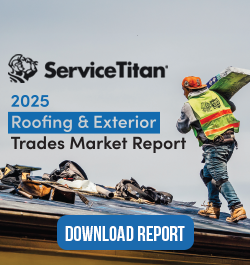












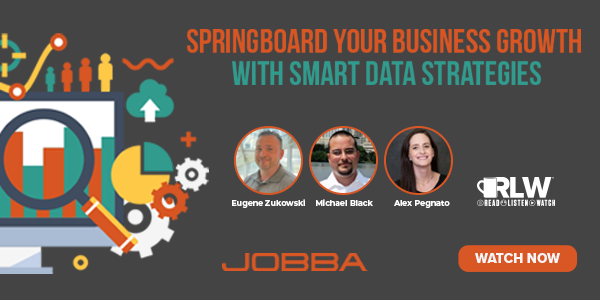
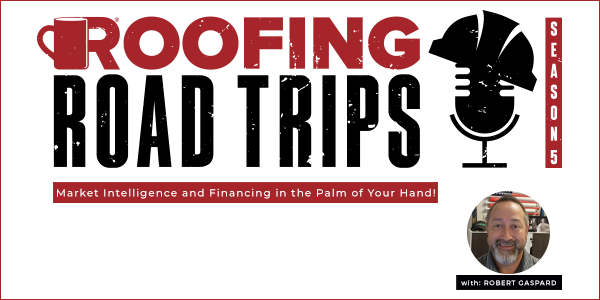
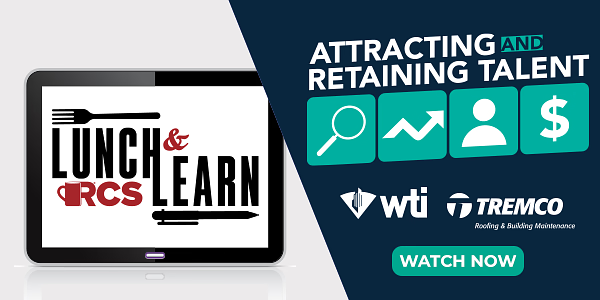







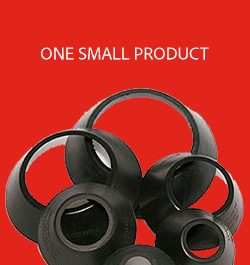
Comments
Leave a Reply
Have an account? Login to leave a comment!
Sign In